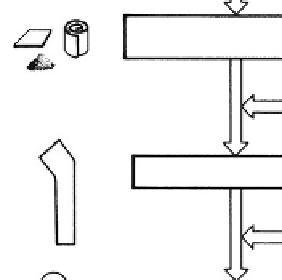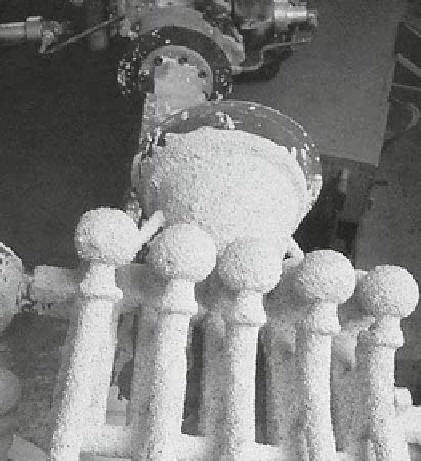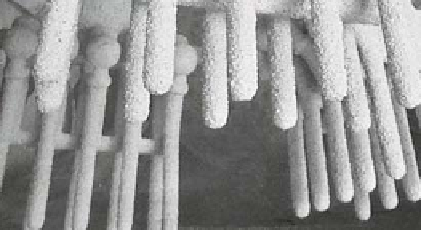Biomedical Engineering Reference
In-Depth Information
inpatient procedures (631,000 procedures), second on
the list was excision or destruction of an intervertebral
disk (250,000 procedures). Since the latter often in-
volves a bone graft of some kind (from the same patient
of from a bone bank) and internal fixation with plates
and screws, this represents yet another clinical pro-
cedure involving significant use of biomaterials. Overall,
including all clinical specialties in 1988, statistics
showed that about 11 million Americans (about 4.6% of
the civilian population) had at least one implant (Moss
et al.,
1990).
In view of this wide utilization of implants, many of
which are metallic, the objective of this section is to
describe the composition, structure, and properties of
current metallic implant alloys. Major themes are the
metallurgical principles underlying structure-property
relationships, and the role that biomaterials play in the
larger problem of design, production, and proper utili-
zation of medical devices.
Steps in the fabrication of implants
Understanding the structure and properties of metallic
implant materials requires an appreciation of the metal-
lurgical significance of the material
0
s processing history.
Since each metallic device will ordinarily differ in exactly
how it is manufactured, generic processing steps are
outlined in
Fig. 3.2.9-1A
.
Metal-containing ore to raw
metal product
With the exception of the noble metals (which do not
represent a major fraction of implant metals), metals
exist in the Earth
0
s crust in mineral form wherein the
metal is chemically combined with other elements, as in
the case of metal oxides. These mineral deposits (ore)
must be located and mined, and then separated and
Mineral deposits (ore)
Mining
Ore separation/concentration
Chemical extraction of metal
Refining of "pure" metal
Alloying to specification
Metallic raw material
in bulk form (e.g. ingots)
Casting
Forging
Rolling
Powder production
Heat treating
Stock shapes (e.g. bar wire
plate, sheet, tube, powder)
Fabrication
Investment casting
Cad/Cam
Grinding
Powder metallurgy
Preliminary implant device
Surface preparations
Porous coatings
Nitriding
Polishing
Sand blasting
Final implant device
Cleaning
Quality control
Packaging
Market
A
B
Fig. 3.2.9-1 (A) Generic processing history of a typical metallic implant device, in this case a hip implant. (B) Image of one step during the
investment casting (''lost wax'') process of manufacturing hip stems; a rack of hip stems can be seen attached to a system of sprues
through which molten metal can flow. At this point, ceramic investment material composes the mold into which the molten metal will flow
and solidify during casting, thereby replicating the intended shape of a hip stem.













